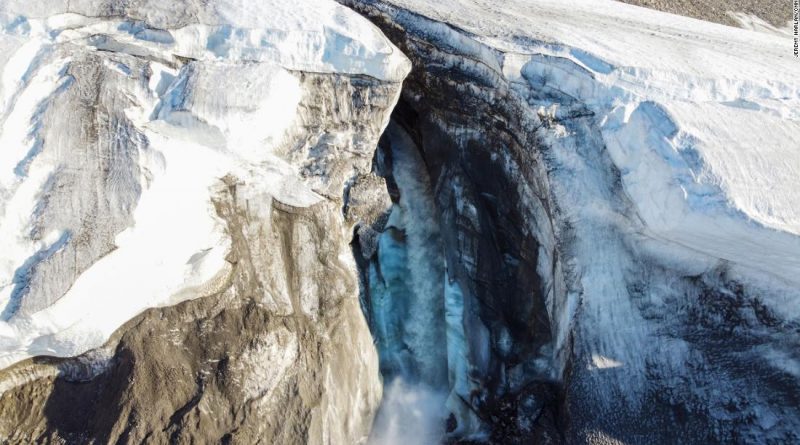The amount of Greenland ice that melted last weekend could cover West Virginia in a foot of water
The amount of ice that melted in Greenland between July 15 and 17 alone — 6 billion tons of water per day — would be enough to fill 7.2 million Olympic-sized swimming pools, according to data from the US National Snow and Ice Data Center.
Put another way, it was enough to cover the entire state of West Virginia with a foot of water.
“The northern melt this past week is not normal, looking at 30 to 40 years of climate averages,” said Ted Scambos, a senior research scientist at the National Snow and Ice Data Center at the University of Colorado. “But melting has been on the increase, and this event was a spike in melt.”
For the scientists out on the ice sheet, the warmth has been alarming.
“It definitely worries me,” said Kutalmis Saylam, a research scientist with the University of Texas who is currently stationed in Greenland. “Yesterday we could wander around in our t-shirts — that was not really expected.”
The latest research points to a more and more precarious situation on the Northern Hemisphere’s most icy island.
At the East Greenland Ice-core Project — or EastGRIP — research camp in northwest Greenland, the work of scientists to understand the impact of climate change is being thwarted by climate change itself.
Aslak Grinsted, a climate scientist at the University of Copenhagen’s Niels Bohr Institute, told CNN that they have been trying to get flights into the camp so they can ship out the ice cores they have recently collected. But the warmth is destabilizing the landing site.
“The temperatures we are seeing right now are simply too hot for the ski-equipped planes to land,” Grinsted said. “So we store the ice cores in large artificial caves we have made into the snow to protect it from the heat of the summer.”
Scientists take advantage of the abnormal warmth while they wait, playing volleyball in their shorts on an ice sheet at the top of the world.
Before human-caused climate change kicked in, temperatures near 32 degrees Fahrenheit there were unheard of. But since the 1980s, this region has warmed by around 1.5 degrees Fahrenheit per decade — four times faster than the global pace — making it all the more likely that temperatures will cross the melting threshold.
Grinsted referred the temperatures at the EastGRIP research site as a “heat wave,” and noted that global warming is pushing the mercury higher more often.
“Yes, the chance of temperatures getting this hot is clearly linked to global warming,” Grinsted said.




